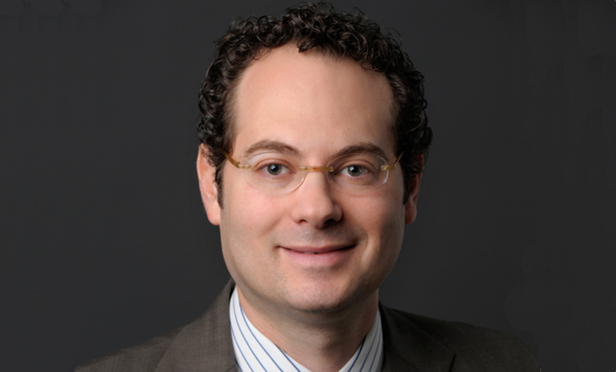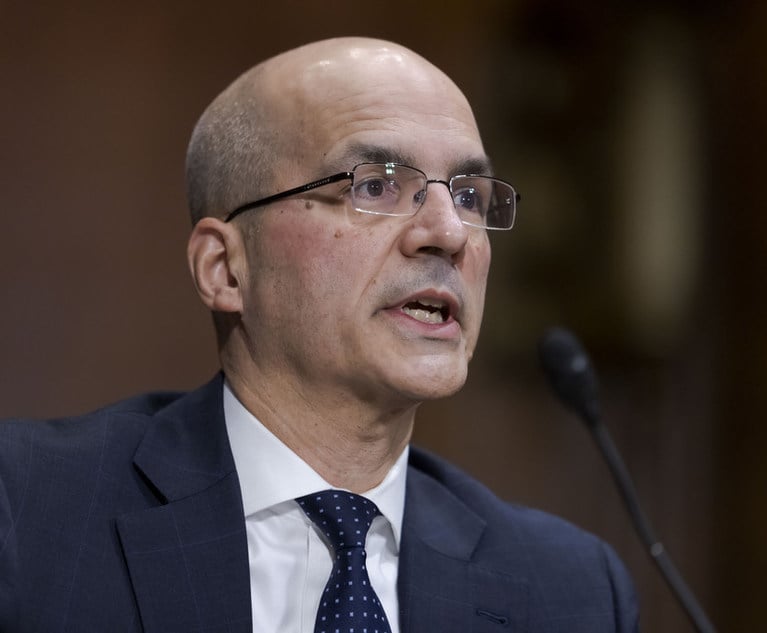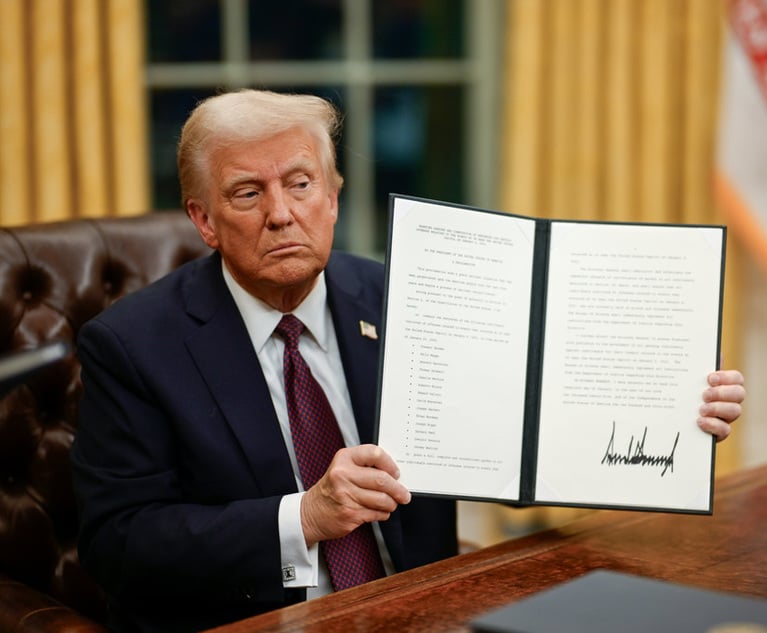Per Se or Rule of Reason?
In his Antitrust column, Elai Katz discusses several recent decisions which tackled a fundamental, and sometimes hotly contested, preliminary issue in many antitrust cases—the applicable standard of review for evaluating the legality of a restraint of trade.
April 26, 2019 at 01:00 PM
10 minute read
 Elai Katz
Elai Katz
Several recent decisions tackled a fundamental, and sometimes hotly contested, preliminary issue in many antitrust cases—the applicable standard of review for evaluating the legality of a restraint of trade. In one case, involving the Department of Justice's criminal suit against firms that find potential heirs and help them collect their inheritance, the district court reconsidered its prior ruling that the conduct and industry were too novel and unusual to warrant summary (per se) condemnation and, following guidance from the appellate court, decided to evaluate the government's customer allocation charges under the per se rule. In several criminal appeals involving real estate foreclosure auctions, defendants argued unsuccessfully that their alleged bid rigging did not impact pricing or output and should not have been presented to the jury as per se offenses.
In another group of cases—civil actions challenging non-solicitation provisions in franchise agreements—courts, litigants and the Department of Justice debated whether those “no-poach” provisions should be reviewed under the per se rule, the rule of reason, or if they should be reviewed under a “quick look,” which lies somewhere in between the per se standard and a full-blown rule of reason analysis, as at least one court had concluded. Taken together, these decisions confirm that established categories of agreements continue to drive the classification of most restraints into per se or rule of reason standards of review. The default rule for most agreements is the rule of reason, where courts evaluate and weigh the harms and benefits. But a limited set of categories, such as price fixing among horizontal competitors, which judicial experience has taught have a pernicious effect on competition and lack any redeeming virtue, are presumed to be unreasonable and treated as per se antitrust violations.
Heir Location
Heir location services firms find people who may be entitled to an inheritance from the estate of someone who died without a will. Their work typically includes searching court records for filings of estates, genealogical research to identify potential heirs and location of those heirs. In exchange for a contingency fee, these firms help heirs collect their inheritance by developing evidence and proving claims in probate court. While in many cases only one heir location service searches for heirs, in some circumstances more than one firm gets involved, leading to the possibility that a single potential heir will be contacted by more than one competing heir location firm. When that happens, the rival firms may compete by offering a more attractive contingency fee.
According to the Department of Justice, competing heir location companies developed “guidelines” providing that the first firm to contact a potential heir would be the only firm to make an offer to that heir and other potential heirs to the same estate and would share a portion of the fees with the second firm to contact the potential heir. The government charged that the guidelines constituted a horizontal agreement to allocate customers, a per se, criminal violation of §1 of the Sherman Act.
The defendants argued that although customer allocation agreements are usually analyzed as per se violations, within the “atypical context” of the heir location business, the guideline have more in common with joint ventures analyzed under the rule of reason because significant resources would have been expended to find the potential heir and, once identified, the probate process has to be administered only once. The defendants also maintained that the guidelines made the market more efficient, allowing each firm to focus on different heirs and expand their total output, in terms of the number of heirs found.
The district court initially agreed and ruled from the bench that the case would be evaluated under the rule of reason rather than the per se rule. The court stated that the rule of reason should apply because: (1) the agreement was structured in an unusual way in that it only applied to new customers, (2) it affected only a small percentage of customers, those contacted by more than one heir location service, whereas most heirs are contacted by only one firm, and (3) the arrangement arose in an obscure industry with an unusual manner of operation.
The Department of Justice appealed the ruling and a related ruling that the charges were time barred. The government asserted that the ruling amounted to dismissal because it would not pursue criminal charges under the rule of reason, stating that “the United States has long eschewed prosecuting conduct subject to the rule of reason.” The U.S. Court of Appeals for the Tenth Circuit agreed with the government and, while the appellate court determined that it lacked jurisdiction over the standard of review ruling, suggested that the district court reconsider. United States v. Kemp & Assoc's, 907 F.3d 1264 (10th Cir. 2018).
Upon reconsideration, and with the benefit of more thorough briefing, the district court decided to subject the charges to per se treatment. United States v. Kemp & Assoc's, No. 16-CR-403 (D. Utah, Feb. 20, 2019). The court explained, following the appellate panel's guidance, that customer allocation agreements among horizontal competitors are per se unlawful, even if limited to new customers. In addition, even customer allocation agreements that affect only a small percentage of customers could be subject to per se condemnation. The court also observed that the guidelines enabled the companies to set prices without the disciplining effect of possible competition. The district court rejected the heir location firm's arguments that their guidelines could be analogized to a joint venture, which would be evaluated under the rule of reason, because the fee-sharing provision was not profit sharing from a collaborative business effort but rather an incentive not to compete. Finally, the court noted that even though courts do not have experience with the heir location industry, the focus of the inquiry should be on the type of arrangement—here customer allocation—rather than the industry.
While obscure and unfamiliar industries are not immune from per se liability, courts should not reject out of hand the possibility that some markets may require uncommon collaboration among rivals. The Supreme Court explained that it is “only after considerable experience with certain business relationships that courts classify them as per se violations.” United States v. Topco Associates, 405 U.S. 596 (1972). For example, in the music licensing business, the Supreme Court decided that blanket licenses for the performance of musical compositions negotiated collectively by licensing agencies on behalf of numerous competitors should not be subject to per se condemnation. Broadcast Music v. Columbia Broadcasting System, 441 U.S. 1 (1979). The Court held that the blanket licenses, while technically “price fixing,” were not a “naked restraint … with no purpose except the stifling of competition.” No individual copyright holder would be able to offer a blanket license on its own.
Foreclosure Auctions
Defendants in foreclosure auction bid rigging cases also argued that criminal charges brought against them should not be subject to per se condemnation. In United States v. Joyce, the defendant was charged with conspiring to rig bids at public real estate foreclosure auctions in California. 895 F.3d 673 (9th Cir. 2018). According to the Department of Justice, the defendant and several co-conspirators would designate one winner among them to win the auction instead of submitting competing bids for the same property during public auctions in Contra Costa county. Later, according to the indictment, the co-conspirators would hold a separate private auction, called a “round,” where they would submit their real bids above the public auction price and the winner would pay the others. Similar charges were brought against three other defendants before the same court in northern California. United States v. Sanchez, United States v. Casorso, and United States v. Marr, Nos. 17-10519, 17-10528, and 18-10113 (9th Cir. Jan. 25, 2019) (unpublished). Juries convicted all four defendants.
The Ninth Circuit ruled that bid rigging was one of the small number of categories classified as per se offenses and rejected the defendants' claims that the district court erred by refusing to apply the rule of reason. The appellate panels were not persuaded by arguments that the scheme involved a few participants in a small number of auctions and did not have a demonstrable effect on the price or quantity of the properties sold, that courts lacked experience with foreclosure auctions or that the bidding arrangement was akin to a joint venture. The Ninth Circuit also rejected arguments that application of the per se rule violated their constitutional rights by introducing a mandatory evidentiary presumption in a criminal trial, stating that the per se rule is not an evidentiary presumption at all.
No Poach
The Department of Justice weighed in with its views on the appropriate standard of review in “no poach” cases, where companies allegedly agree not to hire one another's employees. The department stated—in several briefs submitted to trial courts adjudicating private civil suits—that naked no poach agreement between horizontal competitors should be assessed under the per se rule. See, e.g., Statement of Interest of the United States, Seaman v. Duke University, 15-cv-00462 (M.D.N.C. March 7, 2019). The Department of Justice distinguished no-hire and no- solicitation agreements between franchisors and franchisees, analogizing them to a supplier's allocation of territories among its distributors. The department stated that those are usually vertical and should be assessed under the rule of reason, particularly when franchisor and franchisee do not compete directly in hiring employees. The department opined that such vertical agreements should be subjected to full rule of reason analysis rather than an abbreviated, “quick look,” where plaintiffs are excused from proving harm to competition in a relevant antitrust market, disagreeing with courts that ruled otherwise and noting that quick look analysis applied only in rare cases. Statement of Interest of the United States, Stigar v. Dough Dough, Richmond v. Bergey Pullman, and Harris v. CJ Starr, Nos. 18-cv-244, 18-cv-246, 18-cv-247 (E.D. Wash. March 8, 2019).
* * *
Notwithstanding the heavily litigated disputes over the appropriate standard, in most cases, the result should be the same. After all, the per se rule is meant as a short cut for categories of practices that “would always or almost always tend to restrict competition and reduce output.” If the only three bakers in an isolated village agree to raise the price of bread by 20%, it is likely that a violation would be found even if subjected to a full blown rule of reason analysis, where the court would require proof of anticompetitive effects in the local bread market (instead of assuming harm to competition) and weigh those harms against any benefits (if any cognizable benefits to such an arrangement could be articulated).
Elai Katz is a partner of Cahill Gordon & Reindel.
This content has been archived. It is available through our partners, LexisNexis® and Bloomberg Law.
To view this content, please continue to their sites.
Not a Lexis Subscriber?
Subscribe Now
Not a Bloomberg Law Subscriber?
Subscribe Now
NOT FOR REPRINT
© 2025 ALM Global, LLC, All Rights Reserved. Request academic re-use from www.copyright.com. All other uses, submit a request to [email protected]. For more information visit Asset & Logo Licensing.
You Might Like
View All
'A Shock to the System’: Some Government Attorneys Are Forced Out, While Others Weigh Job Options
7 minute read
'Serious Legal Errors'?: Rival League May Appeal Following Dismissal of Soccer Antitrust Case
6 minute read
How Some Elite Law Firms Are Growing Equity Partner Ranks Faster Than Others
4 minute read
Trending Stories
Who Got The Work
J. Brugh Lower of Gibbons has entered an appearance for industrial equipment supplier Devco Corporation in a pending trademark infringement lawsuit. The suit, accusing the defendant of selling knock-off Graco products, was filed Dec. 18 in New Jersey District Court by Rivkin Radler on behalf of Graco Inc. and Graco Minnesota. The case, assigned to U.S. District Judge Zahid N. Quraishi, is 3:24-cv-11294, Graco Inc. et al v. Devco Corporation.
Who Got The Work
Rebecca Maller-Stein and Kent A. Yalowitz of Arnold & Porter Kaye Scholer have entered their appearances for Hanaco Venture Capital and its executives, Lior Prosor and David Frankel, in a pending securities lawsuit. The action, filed on Dec. 24 in New York Southern District Court by Zell, Aron & Co. on behalf of Goldeneye Advisors, accuses the defendants of negligently and fraudulently managing the plaintiff's $1 million investment. The case, assigned to U.S. District Judge Vernon S. Broderick, is 1:24-cv-09918, Goldeneye Advisors, LLC v. Hanaco Venture Capital, Ltd. et al.
Who Got The Work
Attorneys from A&O Shearman has stepped in as defense counsel for Toronto-Dominion Bank and other defendants in a pending securities class action. The suit, filed Dec. 11 in New York Southern District Court by Bleichmar Fonti & Auld, accuses the defendants of concealing the bank's 'pervasive' deficiencies in regards to its compliance with the Bank Secrecy Act and the quality of its anti-money laundering controls. The case, assigned to U.S. District Judge Arun Subramanian, is 1:24-cv-09445, Gonzalez v. The Toronto-Dominion Bank et al.
Who Got The Work
Crown Castle International, a Pennsylvania company providing shared communications infrastructure, has turned to Luke D. Wolf of Gordon Rees Scully Mansukhani to fend off a pending breach-of-contract lawsuit. The court action, filed Nov. 25 in Michigan Eastern District Court by Hooper Hathaway PC on behalf of The Town Residences LLC, accuses Crown Castle of failing to transfer approximately $30,000 in utility payments from T-Mobile in breach of a roof-top lease and assignment agreement. The case, assigned to U.S. District Judge Susan K. Declercq, is 2:24-cv-13131, The Town Residences LLC v. T-Mobile US, Inc. et al.
Who Got The Work
Wilfred P. Coronato and Daniel M. Schwartz of McCarter & English have stepped in as defense counsel to Electrolux Home Products Inc. in a pending product liability lawsuit. The court action, filed Nov. 26 in New York Eastern District Court by Poulos Lopiccolo PC and Nagel Rice LLP on behalf of David Stern, alleges that the defendant's refrigerators’ drawers and shelving repeatedly break and fall apart within months after purchase. The case, assigned to U.S. District Judge Joan M. Azrack, is 2:24-cv-08204, Stern v. Electrolux Home Products, Inc.
Featured Firms
Law Offices of Gary Martin Hays & Associates, P.C.
(470) 294-1674
Law Offices of Mark E. Salomone
(857) 444-6468
Smith & Hassler
(713) 739-1250






